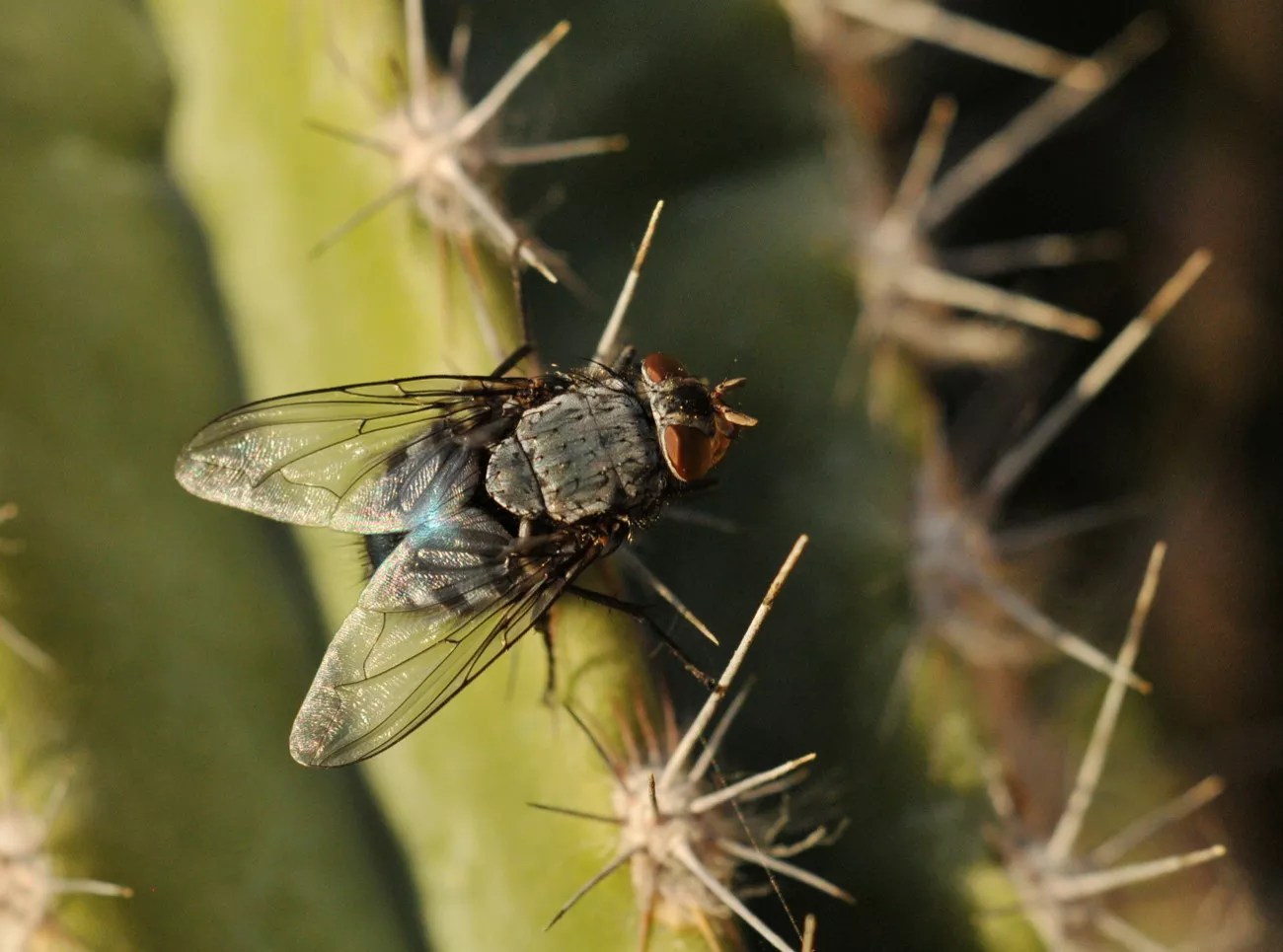
Steven Severinghaus via Flickr

Audio By Carbonatix
There are a lot of flies in Phoenix at the moment – and everyone, it seems, has noticed.
“We are getting so many it’s insane,” wrote one Brentwood resident on Nextdoor earlier in the summer. “I don’t understand.”
A neighbor replied: “It’s like a scene from ‘Amityville Horror’ at my house.”
Colin Dueker, a manager at the Downtown Phoenix Farmers’ Market, called the winged pests “ubiquitous.”
“Glad to know it’s not just my yard,” said another local.
Do these anecdotal observations actually reflect a real influx of insects? Pest companies and entomologists polled by New Times say yes: There are definitely more flies this summer. In fact, they’re far worse than normal.
Ben McAvoy, who runs the Phoenix-based pest control company Insectek Pest Solutions, said his business has seen a “huge uptick” in calls this summer from customers who cannot purge the flies from their homes.
“It does appear to be an outlier,” he said. “I mean, we get a lot of calls about flies. But this year, there are many, many more.”
And if his business is getting more calls, he assumes, “that means other pest control companies are also.”
Eric Paysen, a local entomologist who consults with Valley pest control companies, can confirm. This summer, he said, has been the worst he’s seen since moving to the area five years ago. Companies he advises have been receiving more many more calls.
So, what is behind this inundation? “It’s somewhat of a mystery,” said McAvoy. But he blames a common culprit: An unusually wet monsoon season.
That’s likely a major factor, said Jon Harrison, an environmental physiologist at Arizona State University specializing in insects.
“The larvae of many flies grow up in manure or compost,” he wrote in an email to New Times – and they require a moist environment to survive. In scorching Arizona summers, these sources dry up quickly without rain. But, he said, “This year, with a good monsoon, humidity is higher, manure and compost dries out more slowly, and more fly larvae grow up to be pesky flies.”
Paysen agrees that higher moisture is behind the proliferation – likely caused by a monsoon cycle that has brought more rainfall than is typical to the area.
“They just multiply really, really quickly when the conditions are right,” he said. “Within days you’ve got flies and they’re all laying hundreds of eggs.”
Because of this, he said, the flies are having a “fun summer.”
This year’s monsoon season has indeed been unusually active: Storms this week have already secured 2021 as one of the wettest seasons in the last two decades, and there are still several weeks remaining before its end – with more storms in the forecast. Which means, of course, more flies.
That can be a challenge for pest companies: It’s harder to poison them than other pests, McAvoy said, because they don’t reliably land on any particular surface.
And their source is not always nearby: Flies, scarily enough, can travel for miles.
“So if you have a source that’s not being addressed properly, then anyone within a two-mile radius can end up suffering,” Paysen said.
For the many Phoenix residents struggling to combat the bugs, McAvoy recommends bag fly traps, which are strung up indoors to lure flies to their demise. Preventing them entirely, though? That’s not always possible.
“There’s not much you can do on a per-property basis to alleviate it,” Paysen said.
Those plagued by flies will just have to wait for the weather to change. That seems likely: Arizona, despite this year’s rainfall, is experiencing an ongoing drought. Wetter than normal conditions, according to Arizona’s Department of Water Resources, are likely to diminish in the fall.
It may be an existential threat to the state. But it could help get rid of the flies.